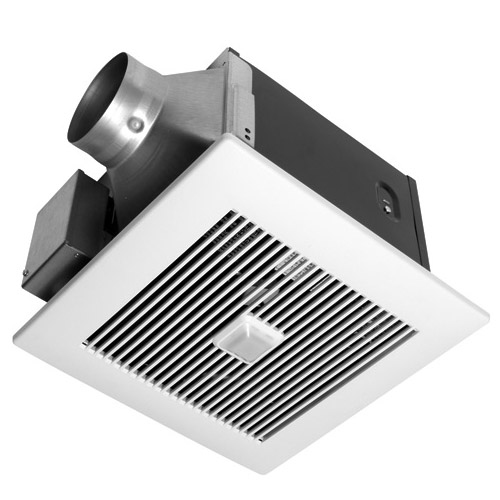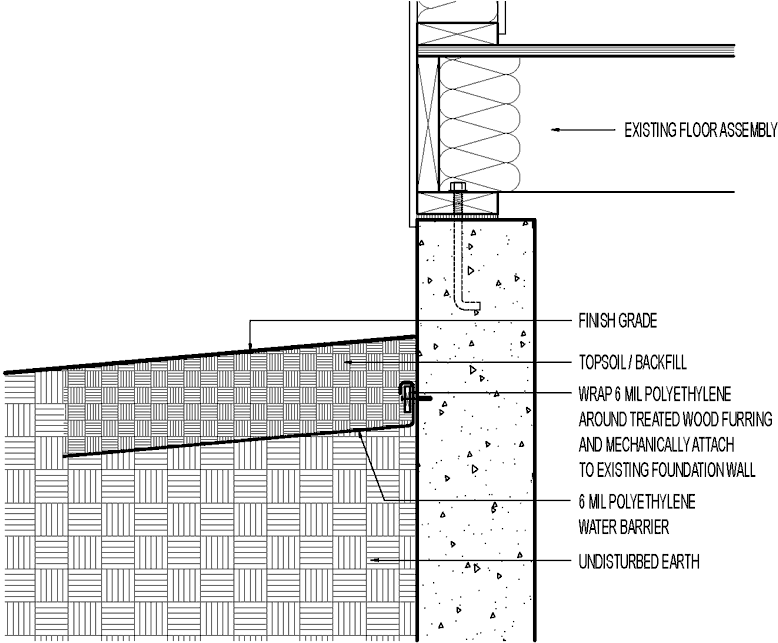Blog Post
Controlling Humidity

High relative humidity is a significant problem in many regions of the country during the summer months. In hot weather, the higher the humidity, the less comfortable we are--partly because moisture does not evaporate from our skin as readily. More worrisome over the long haul, high humidity levels in the air and high moisture content of materials in our homes can result in mold growth, which, in turn, can cause allergies and other health problems (as well as damage the building itself). There are two broad strategies for minimizing indoor humidity problems during the summer months: eliminating moisture sources, and removing moisture from the air. This week we'll take a look at controlling moisture sources; next week we'll examine moisture removal. Keeping moisture out of a home is almost always less expensive and less energy-intensive than removing that moisture. Strategies for minimizing unwanted moisture:Fix drainage problems around the house. If the ground slopes toward the house, moisture will flow toward the foundation during and after a rainstorm, and some of that will seep through foundation walls (or a concrete slab) and into your house. Install gutters. Capturing rainwater that falls on the roof using gutters, and then directing that water into downspouts and pipes to move it away from the house, rather than letting that water drip off the roof edge, is a great way to minimize moisture entry through the foundation. In a climate with heavy snow, it may be necessary to remove gutters in the winter to prevent damage. To avoid the need for gutters, some people secure a layer of polyethylene to the foundation wall below ground level and slope it away from the foundation--in effect moving the gutter to the bottom of the wall.

Fix leaks. If rainwater is making its way into your house through damaged roofing or inadequate flashing around windows and roof penetrations, get a contractor in to identify and fix those leaks. Not only will that help keep humidity levels down in the house, but it will prevent decay and other problems. Insulate water pipes. Just as it makes sense to insulate hot-water pipes to save energy, it also makes sense to insulate cold-water pipes to prevent condensation, which can dampen surfaces in the house and contribute to high humidity levels. Foam pipe insulation is readily available and easy to install. Insulate all water pipes that can be accessed relatively easily. Always use a bathroom fan while showering. If you have one, use it. If you don't, install one--a high-quality, quiet fan that you and your family are likely to actually use. If you have a bath fan but tend not to use it because it's too noisy, replace it with a quiet model or discipline yourself to use it anyway, given the benefits. Panasonic led the industry with quiet bath fans in the 1980s, but most major fan manufacturers offer quality models today that produce less than 1.5 sones (a measure of noise). Look for an Energy Star-certified bath fan, which will produce no more than 1.5 sones. Wipe down the shower after use. Using a squeegee to remove water droplets from the shower after use will direct that water down the drain. Otherwise, that water will evaporate and contribute to the home's indoor humidity. Use a kitchen range hood fan. It should be ducted directly to the outdoors; avoid range hood fans that simply filter and recirculate cooking odors, because those fans don't remove moisture. Cover pots on your stove. This will minimize evaporation during cooking and will also save energy. In hot humid weather, try to minimize cooking altogether by grilling outdoors or eating more salads. Put houseplants outside in the summer so that they won't be introducing moisture into your house. If you have a lot of houseplants, evapotranspiration from them can be a huge source of unwanted moisture. Don't dry laundry indoors. If you hang laundry to dry, hang it outside during the summer months. If you use a clothes dryer, make sure that the exhaust hose is property installed and that leaks are not introducing moisture into the house. Periodically clean exhaust hoses to prevent clogging. Never dry firewood indoors. In rural areas it is not uncommon to bring green firewood directly into the basement for storage. Avoid this practice. As the wood dries it will release huge quantities of moisture into the house--just when you don't want that moisture. * * * In addition to this Energy Solutions blog, Alex writes the weekly blog on BuildingGreen.com: "Alex's Cool Product of the Week," which profiles an interesting new green building product each week. The most recent such blog is on gas-filled panels that provide up to R-7.6 per inch. You can sign up to receive notices of these blogs by e-mail--on the BuildingGreen.com blog page enter your e-mail address in the upper right corner. Alex is founder of BuildingGreen, LLC and executive editor of Environmental Building News. To keep up with his latest articles and musings, you can sign up for his Twitter feed.
Published July 13, 2010 Permalink Citation
(2010, July 13). Controlling Humidity. Retrieved from https://www.buildinggreen.com/news-article/controlling-humidity



Add new comment
To post a comment, you need to register for a BuildingGreen Basic membership (free) or login to your existing profile.